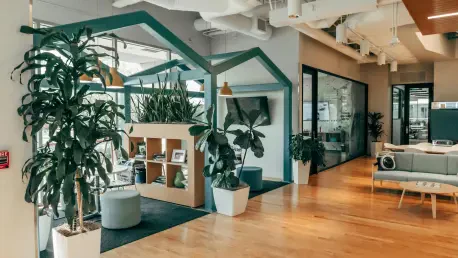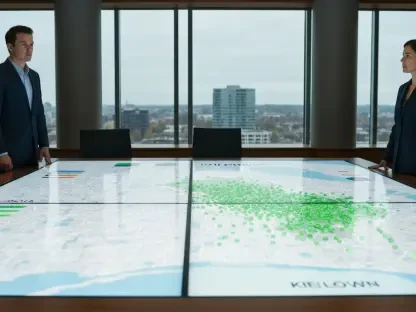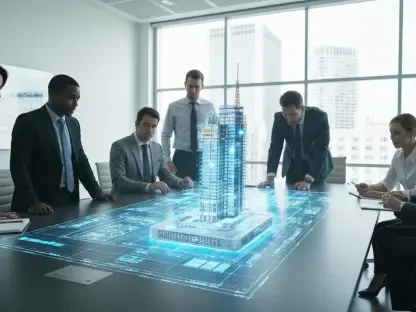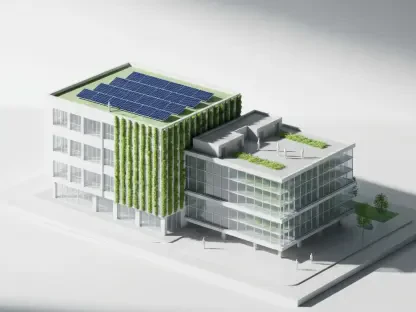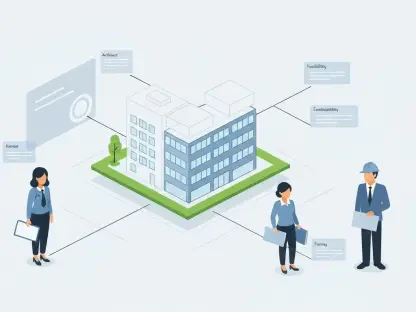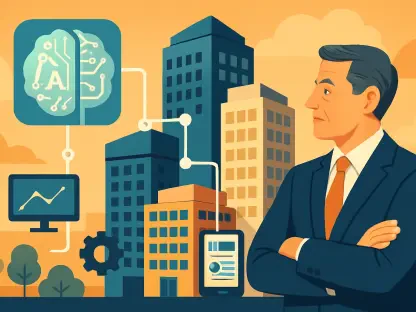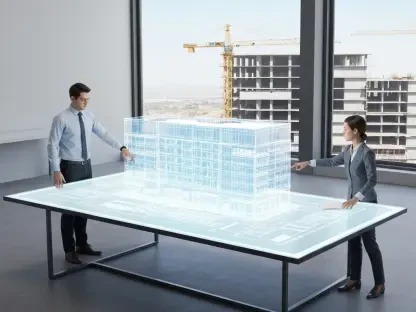In recent years, the concept of what makes an office space desirable has undergone a significant transformation, fueled by shifting customer expectations and workplace trends. Gone are the days when vast cubicle expanses defined the corporate landscape. Today’s businesses prioritize efficient, flexible spaces that offer comfort and align with their core values, illustrating a shift towards more refined requirements in the real estate industry. The modern office evolution underscores the critical balance of comfort, seamless integration of advanced technology, and unwavering commitment to sustainable practices. This trend is also markedly influenced by companies’ growing dedication to ensuring environments that actively support both their brand identities and employee satisfaction.
The Shift Towards Smart and Functional Design
Embracing Smaller, High-Impact Spaces
As more companies return their employees to physical offices, the importance of space that effectively marries size with functionality becomes apparent. The past few years have seen a clear preference for smaller office footprints complemented by high-impact amenities rather than focusing solely on expansive square footage. This strategic downsizing not only economizes on energy use and overheads but also provides an opportunity to consciously equip spaces with features that maximize productivity and comfort. The inclusion of technology-driven designs, such as high-speed fiber optic internet, video conferencing facilities, and Artificial Intelligence-powered systems, is crucial in creating dynamic and effective work environments. This approach leads to spaces where every inch is optimized, reinforcing the ethos of doing more with less.
Brokers are playing an indispensable role in this transformation. Their expertise in conceptualizing office layouts, amenities, and capacities ensures that the visions of companies are materialized into functional spaces that meet contemporary needs. They match customer desires with viable options, curating spaces that balance form and utility while maintaining alignment with corporate values. Additionally, modern offices achieve differentiation with bespoke solutions tailored to unique demands, enabling businesses to thrive as they embrace innovative work models. Customization, therefore, emerges as a significant factor in positioning firms at the forefront of industry trends.
Integrating Outdoor Design Elements
Office design’s evolution has seen a substantial incorporation of outdoor spaces, not merely as supplementary perks but as integral components of the workplace. With a growing appreciation for environments that evoke a sense of homeliness, companies are adopting outdoor design elements to create engaging, multi-functional spaces. Such transformations include open-air meeting areas and recreational facilities, contributing to a holistic work environment. West Des Moines, Iowa, saw the R&R Realty Group leading this change, exemplified in their integration of outdoor meeting spaces, pickleball courts, and walking trails, all designed to blur the lines between indoor and outdoor experiences.
Outdoor areas enhance the work experience, offering spaces that can be repurposed as event venues, conference areas, or quiet retreats. Landscaped rooftops and patios encourage creativity and relaxation, capitalizing on the growing demand for personal and professional well-being. These additions demonstrate practical uses while aesthetically improving the company’s physical footprint and cultivating a caring image internally and externally. By fostering spaces that encourage movement and interaction, companies cultivate an environment conducive to enhanced employee engagement and satisfaction. The integration of outdoor elements is thus not only innovation but an evolution towards offices that better serve their occupants.
The Rising Emphasis on Sustainability
Commitment to Sustainable Development
Sustainability in office design has seamlessly transitioned from being an emerging trend to a steadfast industry standard. Driven by awareness and a global push toward responsible consumption, the adoption of sustainable practices in real estate has become non-negotiable. At the frontline of these changes, developers like R&R Realty Group are setting benchmarks by meticulously planning properties with a commitment to reimagining traditional approaches. Their initiative to incorporate repurposed materials showcases their intent to build with both foresight and responsibility, ensuring that projects substantiate a broader commitment to environmental stewardship.
In this context, sustainability isn’t a mere design consideration; it insists on being central to the business strategy, informing decisions from construction to operation. Outfitting properties with energy-efficient lighting, water-saving fixtures, and HVAC systems predicates long-term benefits beyond immediate financial savings, such as increased occupant wellness and future-proof compliance. Moreover, by deploying solar panels or embedding greenscapes, businesses maintain relevance in a marketplace that increasingly values impact-conscious development. Clearly, the office’s sustainable transformation encapsulates more than reducing carbon footprints; it aligns with enduring integrity.
Incorporating Customer Feedback and Needs
The direct engagement with customer feedback has emerged as a key driver behind adaptive and responsive office spaces that embody sustainability. Active dialogue with clients ensures that developers refine design processes and integrate features that prioritize both ecological impact and user convenience. One such example is the incorporation of electric vehicle (EV) charging stations, a decision influenced by actual occupier demands for progressive amenities. As more employees seek alternatives to conventional commuting, having these facilities readily available enhances the appeal of the workplace. This foresight into customer needs and preferences fosters an environment where sustainability and customer satisfaction coexist organically.
The establishment of open channels for continuous communication between developers, brokers, and customers has facilitated mutual understanding and anticipation of future trends. It creates a looped system of feedback, whereby spaces can evolve alongside technological advancements or shifting values without necessitating major overhauls. As a result, office spaces adeptly respond to ecological and social responsibilities, fostering occupancy that aligns with both global movements and localized expectations. This synthesis of adaptability and accountability ensures office environments remain dynamic and relevant, ready to meet the challenges of the future.
A Future Defined by Collaboration and Innovation
Over recent years, the idea of what makes an office desirable has significantly changed, driven by evolving customer expectations and workplace trends. The era of sprawling cubicles dominating corporate environments is ending. Modern corporations now emphasize efficient, versatile spaces aligned with comfort and core values, reflecting a refined shift in real estate demands. Today’s offices highlight the essential balance between comfort, smooth incorporation of advanced tech, and commitment to sustainability. Companies are increasingly devoted to creating environments that reinforce their brand identity and prioritize employee well-being. This transformation focuses on nurturing a space that meets aesthetic and practical needs while embracing technological advancements and eco-friendly practices. By fostering a dynamic and responsive environment, businesses bring together innovation and tradition, empowering employees and promoting a cohesive culture that resonates with modern values. This evolution showcases how workplaces now impact corporate success and employee satisfaction.
